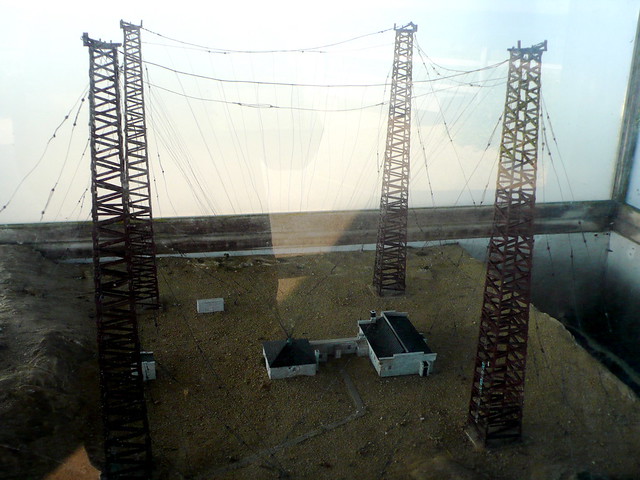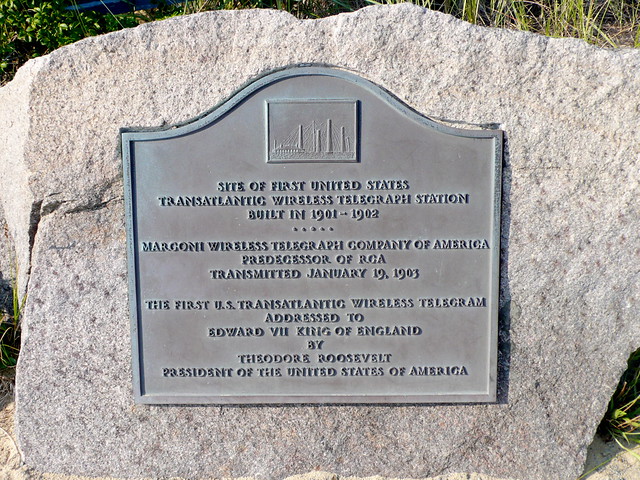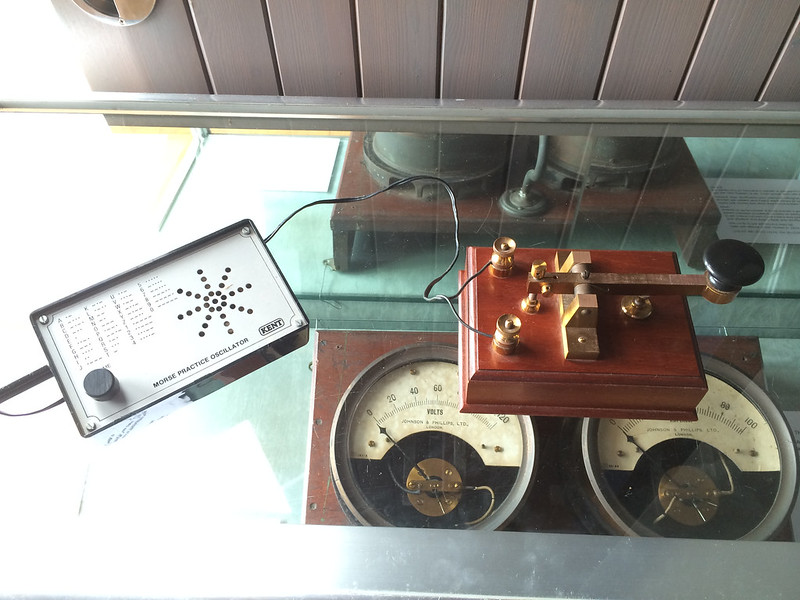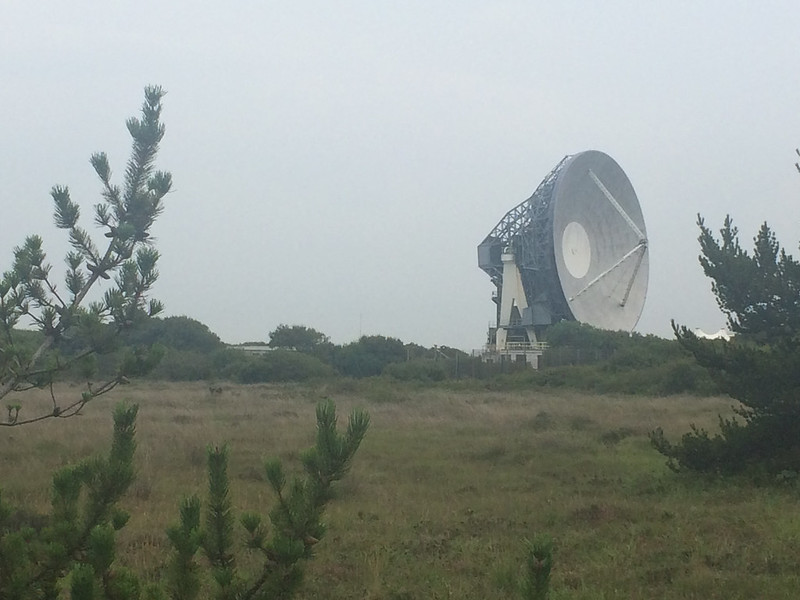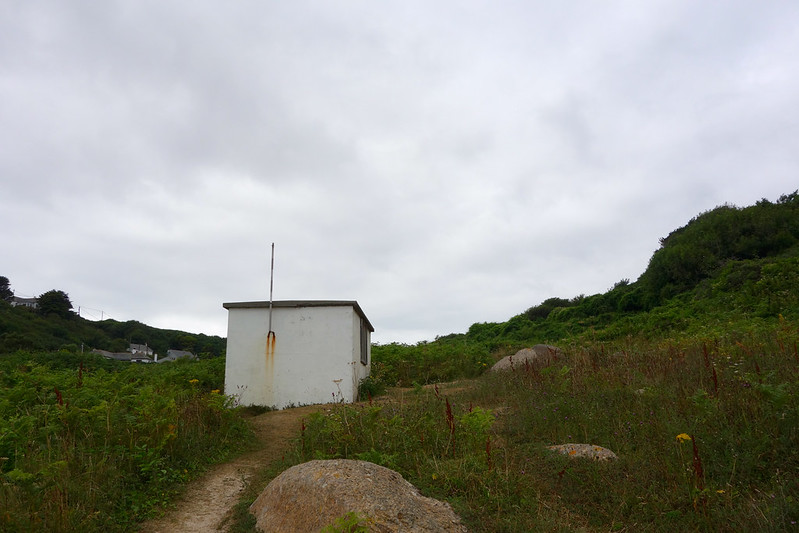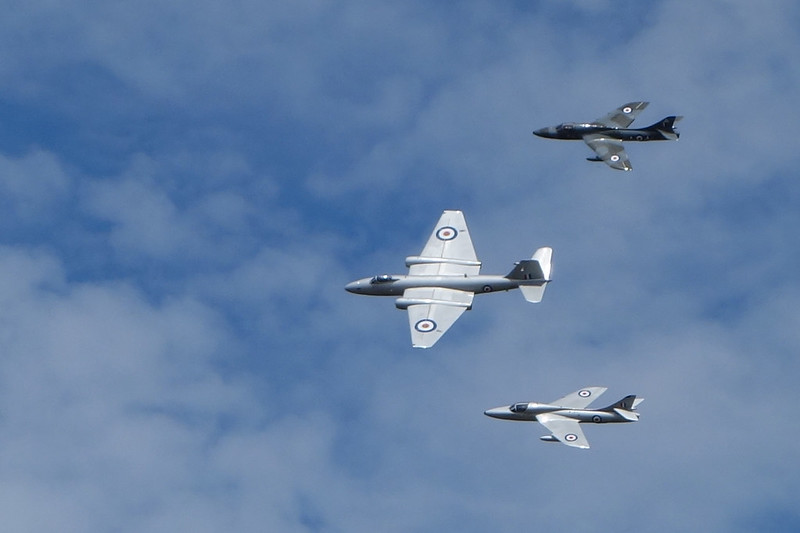Russell Davies
As disappointed as you are
About | Feed | Archive | Findings | This blog by email
long tourism
Five years ago we went on holiday to Cape Cod, rented a car and trundled out to the Wellfleet Marconi Site. There's not a lot there. It's a place "where a man may stand and put all of America behind him". It's where Marconi first (or sort of, almost first) transmitted Transatlantic messages.
A little hut, a model, a phone line you can call to hear about it all, a plaque.
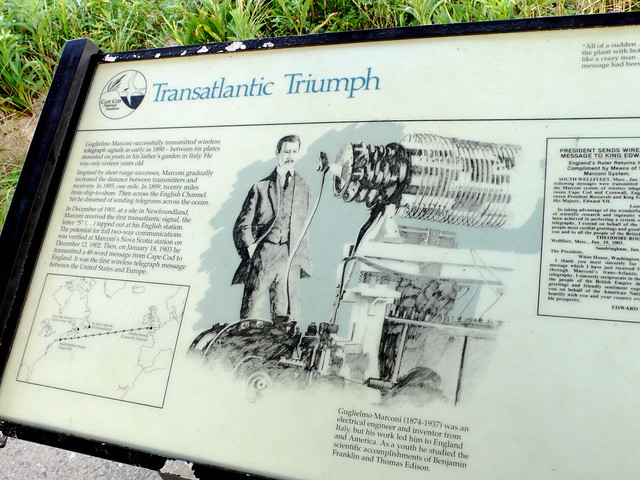 It was atmospheric though, there was enough to help you imagine the struggle and the excitement of those first transmissions across the Atlantic. (Sadly, now, apparently, it's mostly fallen into the sea.)
It was atmospheric though, there was enough to help you imagine the struggle and the excitement of those first transmissions across the Atlantic. (Sadly, now, apparently, it's mostly fallen into the sea.)
Last week we went to the other end - the Marconi Centre at Poldhu in Cornwall:
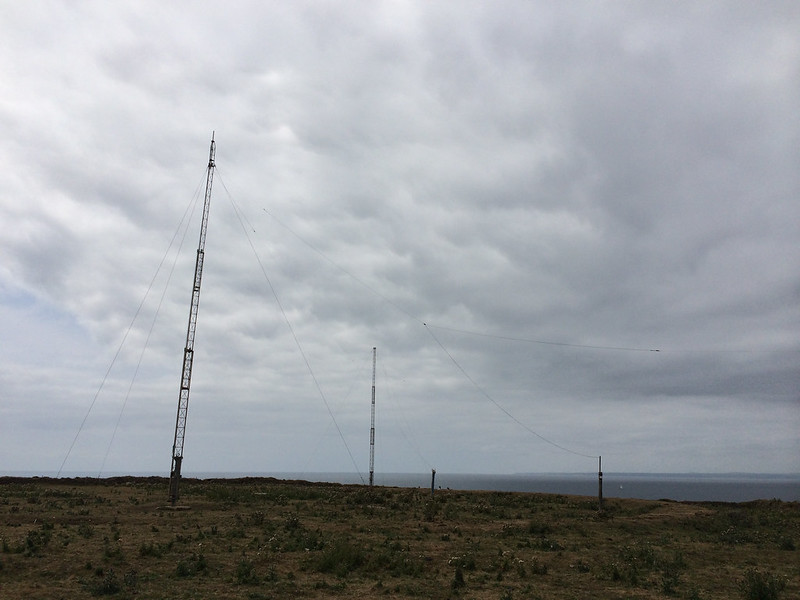 There's a bit more here. A little centre staffed by local hams and enthusiasts that will show you a video about Marconi, featuring a small collection of Morse code transmitters.
There's a bit more here. A little centre staffed by local hams and enthusiasts that will show you a video about Marconi, featuring a small collection of Morse code transmitters.
I like this long slow way to do tourism, seeing each end of invisible infrastructural things.
While we were in Cornwall we also stopped at Goonhilly and the Telegraph Museum at Porthcurno. I need, eventually, to find where in New York that Telstar transmission came from and what was on the end of those cables.
August 03, 2014 | Permalink | TrackBack (0)
touring aircraft
If asked, and, if you blog long enough it's the kind of thing that might come up, I think I'd say that the most beautiful words in the English language are these:
"I wanna fly my biplane, low over Swaffham"
It's from On Reaching The Wensum by Half Man Half Biscuit.
I don't know why I like it so much. It's partly that it's unexpectedly romantic, it's partly the emergence of the tune from dischord, it's partly the use of a small town in Norfolk. But it's partly the image of a plane, just above you.
It was going through my head all day at the RNAS Culdrose Air Day, though, of course, I don't have any actual pictures of a biplane.
It's that feeling - a plane, low, over the countryside. Close to you, yet very far and very fast away.
At one point the commentator, telling us about one of the planes, one with an all-around transparent canopy, described it as a "splendid touring aircract". Anne and I both noticed that, smiled at that thought. That would be a lovely way to see the country.
August 02, 2014 | Permalink | TrackBack (0)
Being early is like being lucky
I had my stab a while ago, Craig's written it better.
July 24, 2014 | Permalink | TrackBack (0)
Dickinson, Dickens and Clough.
Naming is hard. That's true in computering and in new products.
But, wait, here's a whole new name-space land-grab opportunity - famous dead people with a thing everyone knows about them.
There's Kennedy (which is brilliant and plays off the 'everyone remembers where they were when Kennedy was shot' thing).
There's Hemmingway (which plays off the 'short, plain sentences' thing and which James has written about wisely).
There must be others. Baby Einstein comes to mind. And, er. There must be others.
I wonder what the Dickens app would do. Or the Seacole one. Or the Dickinson one (and who owns the Dickinson name-space, Emily or Bruce?*). Pocahontas. Thatcher. Armstrong. Banks. Clough.
This stuff is going to happen.
(*Though Bruce isn't dead. Which, in this instance, goes against him)
UPDATE: Phil has pointed out another one - Streisand.
July 23, 2014 | Permalink | TrackBack (0)
Not Audiences Again
A little while ago I wrote a post called Activities Not Audiences. As is often the way, one of the fantastic user researchers at GDS has made the same point but more clearly, more precisely and with actual evidence. Damn, they're good.
July 23, 2014 | Permalink | TrackBack (0)
potatoes
Many years ago Anne and I sat laughing hysterically in the car listening to this on some radio compilation. I've been idly looking for a copy ever since but had another go after it was on this fantastic Archive on 4. This is the funniest, most joyous bit of radio you will ever hear.
July 22, 2014 | Permalink | TrackBack (0)
Not the British Golf
Here's another thing that seems a little out of time - the dash of the Austin Maestro/Montego, which also featured an electronic voice. Something attempted in the early 80s, which would be pretty ambitious even now.
I once had a client who, as a junior marketing person, had worked on this. He told tales of standing in damp Solihull carparks trying to get the voice to actually work so they could demonstrate it to government ministers, so they could get more money to keep the company going.
But look at those graphics - a solid-state electronic dash clearly sharing an inspirational path with 2001 et al, but not in a science-fiction film, in a mass-produced car.
July 20, 2014 | Permalink | TrackBack (0)



